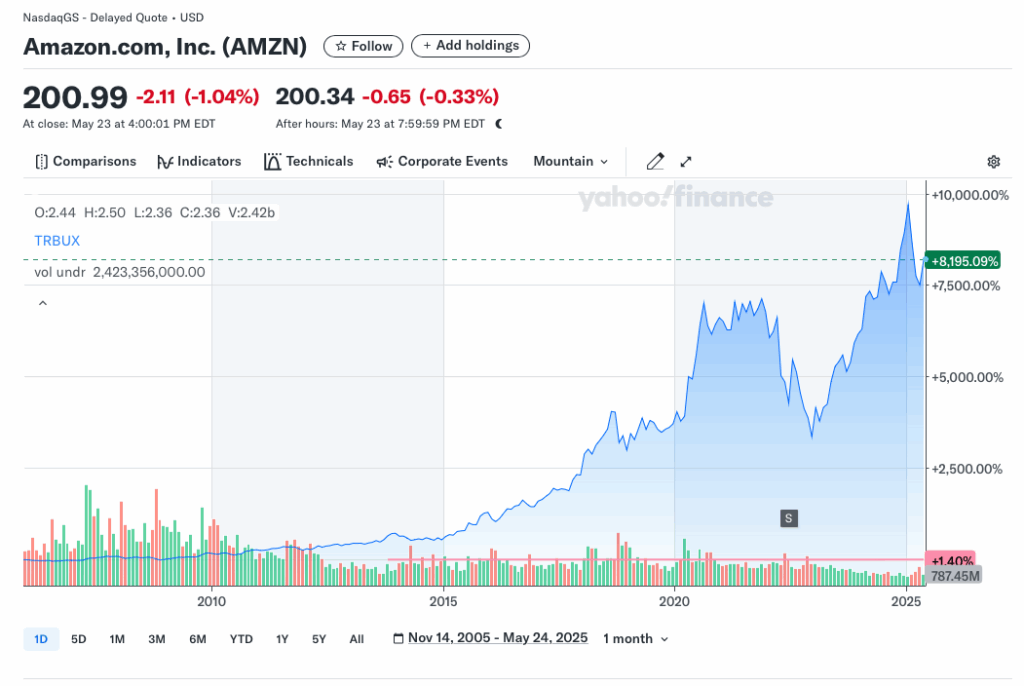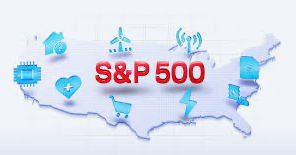While I write quite a bit about stocks, I continue to invest in, and advocate for, an investment in a nice low-cost S&P 500 fund.
It’s Sunday morning, I have a cup of coffee and I am reading the 10-K for Arista Networks. OK, it’s a hundred pages, I’m not reading, I’m skimming and focusing on a few areas, but…
The interesting parts to me today are about who their suppliers are, where they are located…you know, the whole tariff thing…anyway.
I realize that most readers are not spending their morning this way.
And the good news is that you don’t have to. Anyone can be a successful investor by buying shares of a mutual fund.
A mutual fund (or ETF) pools investor money and buys assets – generally stocks and bonds. An actively managed fund has a portfolio manager, or management team, that researches and picks stocks and bonds. A passive fund, has a computer model that generally tracks an index, like the S&P 500.
S&P 500 Fund
Standard and Poor (S&P) maintains a list of the 500 largest publicly traded US companies. They also assign a weighting to each company based on its market cap. In other words, larger companies have a higher impact on the value of the index.
Mutual fund and ETF providers, subscribe to Standard and Poor’s service to get regular updates to the list. While the companies that make up the S&P 500 don’t change that often, the weightings change constantly.
Fidelity, Vanguard, Blackrock, and lots of other companies subscribe to the service, and then offer S&P 500 funds that buy shares of every company in the S&P 500.
Typically on a quarterly basis, the funds will rebalance. This is a process of looking at the weights the fund holds and comparing them to the weights published by S&P, and buying or selling shares to bring their portfolio holdings inline with the current S&P weightings.
What Makes the S&P 500 a Great Investment
As we discussed, the S&P 500 consists of the 500 largest publicly traded US companies. Here’s the full list from stockanalysis.com. And here’s the top 10.

And before we go on, let’s address why there are 503 stocks in the S&P 500.
Look at numbers 5 & 6. They’re both Google parent Alphabet. Alphabet has 2 share classes. They trade as if they were 2 separate companies. We could buy shares of one or the other or both. The S&P 500 is made up of the 500 largest publicly traded US companies. If any of the 500 companies on the list have multiple shares classes, the additional share class(es) also must be included. Thus the 503 stocks.
All of these companies are household names. Apple sells quite a few iPhones I’m told. They do pretty well. Same for Amazon. I’ve seen them making deliveries in my neighborhood. They’re probably selling a lot of stuff.
As an investor, you could probably do pretty well investing in a basket of 503 stocks that includes Amazon and Apple.
The top 10 is very tech heavy. But if we go a bit deeper, we see Visa, Mastercard, JP Morgan, Walmart, Costco, Exxon Mobil, Home Depot, Johnson and Johnson, Coca Cola, McDonalds, The Walt Disney Company…
Many of us are familiar with these companies. They’re all successful businesses and it’s likely many of them they will continue to be successful. I can’t tell you which ones will be successful and which will not, so let’s buy a few shares of all 503. That’s an S&P 500 fund.
The S&P 500 is Actively Managed
…sort of…
Active management means having a portfolio manager who reads research reports and buys and sells stocks daily. The S&P 500 is not that.
But, companies are added and removed from the S&P 500.
Why Do We Care?
We do care. This is really important.
I’ve written a bit about how I lost money in Under Armor (Ticker: UA, UAA). Under Armor was in the S&P 500.

I saw lots of folks wearing Under Armor. I bought some Under Armor clothing and it was pretty good. I bought shares in 2010, saw Under Armor become my biggest position in 2015, and then rode it down and finally sold the last of my shares in 2020. Huge bummer.
In 2022, Under Armor was removed from the S&P 500. Read here.
In 2022, because of its stock price decline, Under Armor was no longer one of the 500 largest publicly traded US companies.
While S&P 500 index fund holders were certainly impacted by the fall of Under Armor in 2015 – 2022, the bleeding stops there. It’s out of the index and even if it goes to zero, it won’t impact the S&P 500 fund shareholders.
Now, the great thing about holding an index fund with lots of holdings is that the other companies like Microsoft, Meta (Facebook), Amazon and Apple had huge gains during this period that more than made up for Under Armor’s losses.
But the point is that no S&P 500 company will go to zero, because it will get booted from the index long before that happens.
New Rocket Stocks
Even more important than avoiding the stocks that go to zero is the ability to own shares of successful high-growth companies.
Back in 2005, a small company called Amazon was added to the S&P 500. Read here.
It’s done pretty well since – up over 8,000 percent.

While it would have been great to own Amazon shares back when it first went public, there was quite a bit of gas left in the tank. It’s turned out to be a pretty good investment.
Active Management?
So, to clarify my sort of comment…An S&P 500 fund is not actively managed. No human is making decisions to buy and sell stocks each day. However, the index components change as:
- companies shrink and are removed from the index because their market cap falls below the 501st largest US publicly traded company – like Under Armor
- companies grow and surpass the market value of the 500th largest publicly traded US company – like Amazon
Because of this, as S&P 500 fund investors we are protected from company’s stock price going to zero, and we are able to participate in the price appreciation of high-growth US public companies as they make their way into the S&P 500.
Wrap-Up
As investors, it is important that we understand how our investments work. On the good days it doesn’t matter. When the S&P 500 is up more than 20% in both 2023 and 2024, who cares what it is or how it works, look at the gains!!
But when it’s down and we’re starting to think “why the hell do I own this – why didn’t I stick with cash?” It’s important to understand what we own, how it works, and why we expect this investment will be worth more 5 years down the road.
The fact that the S&P 500 removes companies that are shrinking and adds companies that are growing should give us more conviction that it will remain a profitable investment. Here are some more reasons.

